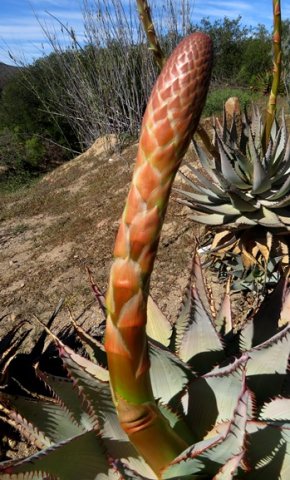Aloe glauca floral bracts and leaves

Author: Ivan Lätti
Photographer: Thabo Maphisa
Aloe glauca grows about 40 leaves per rosette. The fairly broad leaves taper in a triangular shape, toothed dark red-brown along the margins. The upper surface is nearly flat at the base, slightly channelled near the tip; the lower surface convex. Leaves become about 40 cm long and 10 cm to 15 cm wide near the base.
The rigid marginal teeth of the leaves are deltoid or three-dimensionally triangular, about 5 mm long. Small, scattered teeth are sometimes also found on the outer leaf surfaces near their tips.
The species is named for the glaucous, blue-grey smooth leaf colour that makes the plant fairly easy to identify. Faint longitudinal lines are often visible upon the leaf surfaces but no spots.
The leaf sap is orange when it dries (Van Wyk and Smith, 2003; Reynolds, 1974; Jeppe, 1969; iNaturalist).

